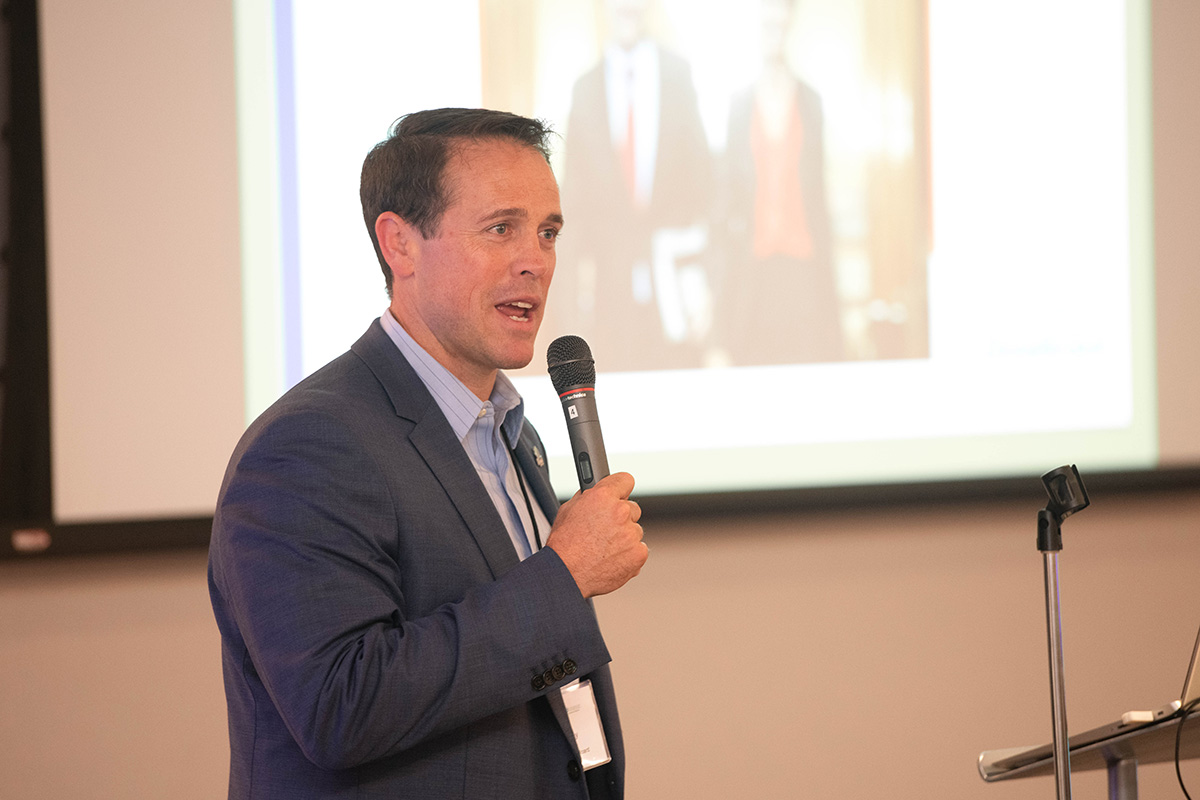
(Photo: Iowa Soybean Association)
Soy’s role in food security
October 20, 2022
The 2022 Borlaug International Dialogue has brought a packed week of side events, breakout sessions and discussion on agriculture and food to Des Moines during the 2022 World Food Prize, and has also included some perspectives from the world of soybeans.
Featured guests during the Oct. 19 evening panel, hosted by Corteva, centered around “Food Security and Agricultural Technology: The Importance of Public-Private Collaboration.” Pratima Singh, Economist Impact’s senior manager of policy and insights, served as moderator for the panel.
Panelists included:
- Grant Kimberley, Iowa Soybean Association sr. director of market development and Iowa farmer
- Tim Glenn, Corteva Seed Business Unit executive vice president
- Dr. Margaret Zeigler, United States Representative on Inter-American Institute for Cooperation on Agriculture
Singh explained that affordability and quality/safety, two of the traditionally stronger pillars of global food security, have recently weakened as the global food system faces structural challenges. She asked Kimberley to weigh in with a farmer’s perspective on the current state of ag technology.
“I like to think about the stories that my father and grandfather would tell,” Kimberley says. “When you talk about technology it’s easy to quantify it: they used horse power. My grandfather started using low horsepower tractors and hybrid technology. My father’s tractors got larger as time went on, leading us to where we are today.”
He continues, “Today we’re using everything from soil sampling by the acre, spreading fertilizer only to what the soil tests require, mapping all of our fields, using very top-level seed technology. This current crop season we had a very dry summer. Using all these technologies and efficiencies, we’re still having pretty good corn and soybean yields. Twenty years ago, I think we would have seen a major reduction. Our yields are still going to be pretty good this year, and it’s all because of education, technology, improvements, all these things that farmers have had to adopt to try to be efficient and ultimately as profitable as possible.”
After some discussion over the differences globally between farmer organizations and ag technology modernization in China, a question came from the crowd about ag technology adoption and availability for smaller farmers in other countries. Kimberley offered a glimpse at “a soybean perspective” and the work being done to assist farmers in developing markets, notably the U.S. Soybean Export Council’s Soy Excellence Centers and the efforts of the World Initiative for Soy in Human Health which both work with local producers in various countries and promote the development of global food and market systems.
“The world needs more protein,” says Kimberley. “Soy is an excellent source of protein whether for human consumption or livestock feed.”
Back